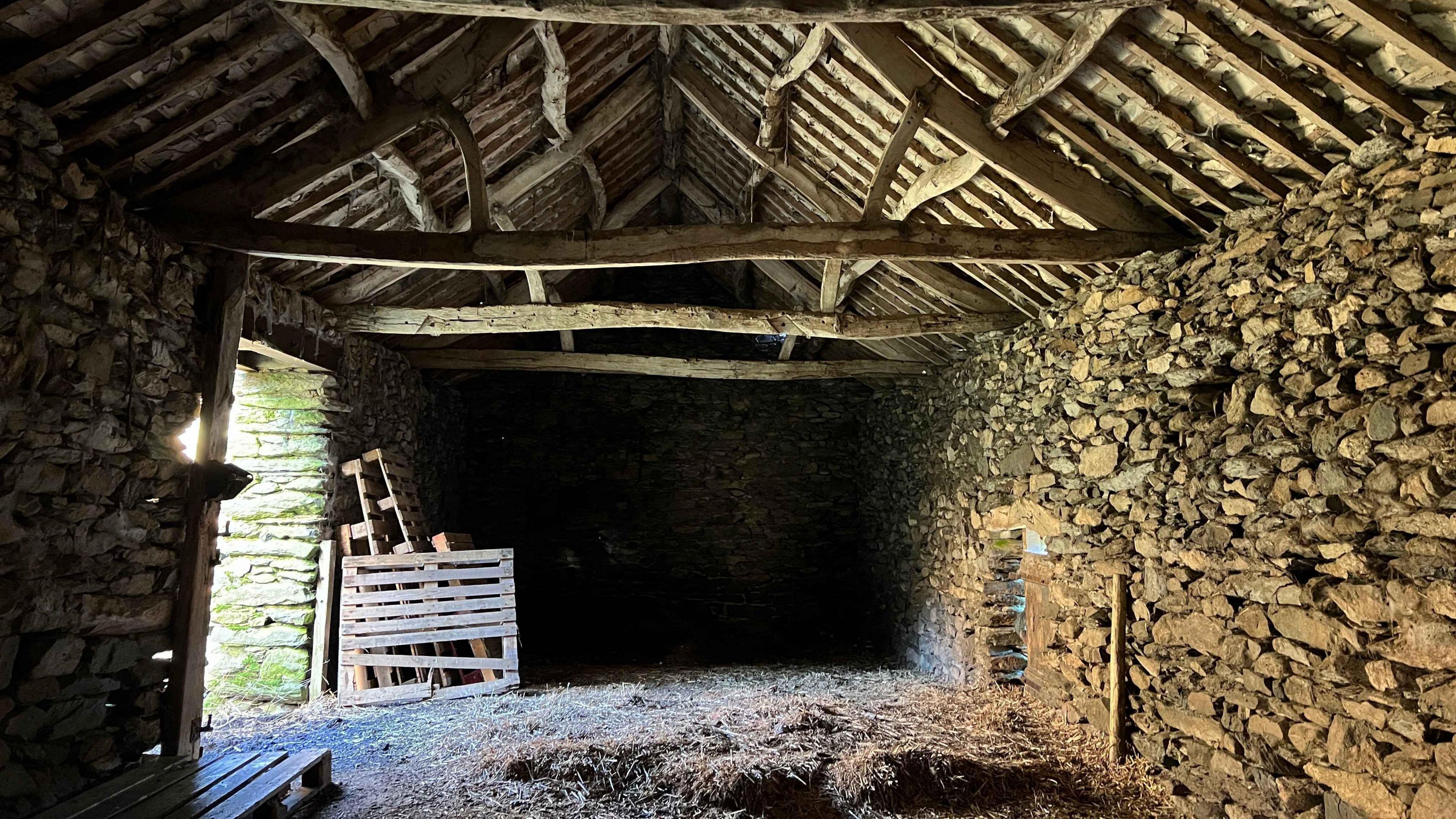Rural 17th Century farmhouse gets listed status

The building can be found in a valley in the national park
- Published
A 17th Century farmhouse has been granted Grade II listed status.
The building, known as Mullender, in the remote valley of Swindale in the Lake District was awarded the status by Historic England in July.
The organisation said the building was a "good example of a modest Westmorland farmstead".
Lake District National Park Authority (LDNPA) official Rose Lord said the structure's new status introduced an "extra layer of protection above normal planning rules".
LDNPA said Mullender was a good example of a "hall house" which was a type of early domestic building that usually had a hearth for a fire at one or both ends.
Historic England said it retained "good survival" of its "original structural fabric" and that its roof structure demonstrated "early carpentry techniques".
The Hearth Tax of between 1669 and 1672 recorded 14 households in Swindale of which the people living in Mullender would have been one, according to the organisation.
Mullender was converted into a space for cows in the 1800s.

The detached barn was also given listed status
The building also has a detached barn that was also awarded listed status which Historic England said had a "good historic roof structure".
LDNPA said that even though Mullender had not been used as a residence for nearly 200 years, there was a "strong chance" that future proposals could be made to convert Mullender for such usage again.
The building's new listed status would prevent "unsympathetic alterations", said Ms Lord.
"The distinctive traditional buildings of the Lake District are a key part of the national park's special qualities," she said.
Follow BBC Cumbria on X, external, Facebook, external, Nextdoor and Instagram, external.
Get in touch
Do you have a story suggestion for BBC Cumbria?
Related topics
Related stories
- Published3 August
